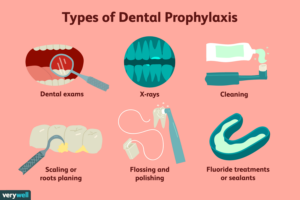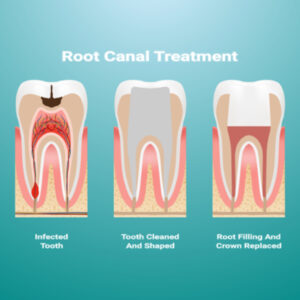Upper East Side Orthodontics
Contact
Hours
- Monday: 9:00am – 9:00pm
- Tuesday: 9:00am – 6:00pm
- Wednesday: 9:00am – 9:00pm
- Thursday: 9:00am – 9:00pm
- Friday: 9:00am – 5:00pm
Upper East Side Orthodontics, located in the vibrant city of New York, New York, is dedicated to providing top-quality orthodontic care in a welcoming and comfortable environment. Led by a team of experienced orthodontists, our practice combines advanced technology with personalized treatment plans to help patients achieve the smiles they’ve always dreamed of. Whether you’re considering traditional braces or clear aligners, Upper East Side Orthodontics offers a comprehensive range of orthodontic services tailored to your unique needs.
Orthodontic Services
Traditional Braces
- Metal Braces: Time-tested orthodontic solution for correcting misaligned teeth and bite issues.
- Ceramic Braces: Clear or tooth-colored brackets for a more discreet orthodontic treatment option.
Clear Aligner Therapy
- Invisalign: Removable clear aligners for a virtually invisible way to straighten teeth without traditional braces.
- ClearCorrect: Transparent aligners that gradually shift teeth into alignment for a more aesthetically pleasing smile.
Comprehensive Orthodontic Care
Initial Consultation
- Orthodontic Evaluation: Thorough assessment to determine the most suitable treatment plan for your individual orthodontic needs.
- Customized Treatment Plan: Tailored orthodontic approach designed to achieve optimal results while considering your lifestyle and preferences.
Orthodontic Treatment
- Braces Adjustment: Regular visits to ensure braces or aligners are properly adjusted for consistent progress and comfort.
- Interceptive Orthodontics: Early intervention to address orthodontic issues in children and guide proper jaw and tooth development.
Patient Experience
Comfortable Environment
- Modern Facility: State-of-the-art office equipped with the latest orthodontic technology for efficient and effective treatment.
- Relaxing Atmosphere: Comfortable and inviting environment to help patients feel at ease during their orthodontic appointments.
Personalized Care
- Individualized Attention: Dedicated orthodontic team committed to providing personalized care and addressing your specific concerns throughout your treatment journey.
- Open Communication: Transparent communication about your treatment plan, progress, and any adjustments needed to ensure the best possible outcome.
Prophylaxis
Dental prophylaxis, commonly referred to as a dental cleaning, is a preventive dental procedure performed by a dental hygienist or dentist to remove plaque, tartar (calculus), and stains from the teeth and gums. It plays a crucial role in maintaining optimal oral health and preventing dental problems such as tooth decay, gum disease, and bad breath. Here's an overview of dental prophylaxis and its importance:
- Plaque and Tartar Removal:
- Dental prophylaxis involves the thorough removal of plaque and tartar buildup from the tooth surfaces, especially along the gumline and between the teeth. Plaque is a sticky film of bacteria that forms on the teeth throughout the day and can harden into tartar if not removed through regular brushing and flossing. Tartar is a hardened deposit that cannot be removed with regular brushing and requires professional intervention to prevent dental problems.
- Prevention of Tooth Decay and Gum Disease:
- By removing plaque and tartar, dental prophylaxis helps prevent the development of tooth decay (cavities) and gum disease (periodontal disease). Plaque bacteria produce acids that can erode tooth enamel and lead to cavities, while tartar buildup along the gumline can irritate the gums and contribute to gum inflammation and infection. Regular dental cleanings help keep the teeth and gums healthy and reduce the risk of dental problems.
- Detection of Oral Health Issues:
- During a dental cleaning, the dental hygienist or dentist will also perform a thorough examination of the teeth, gums, and oral tissues to detect any signs of dental problems or oral health issues. This may include checking for signs of tooth decay, gum inflammation, oral cancer, or other abnormalities. Early detection and intervention are key to preventing the progression of oral health issues and maintaining overall oral health.
- Fresh Breath:
- Dental prophylaxis can also help improve and maintain fresh breath by removing plaque, tartar, and bacteria that contribute to bad breath (halitosis). Cleaning the teeth and gums thoroughly can eliminate odor-causing bacteria and leave the mouth feeling clean and refreshed.
- Promotion of Overall Health:
- Research has shown that there is a strong link between oral health and overall health, with poor oral hygiene being associated with an increased risk of systemic health problems such as heart disease, diabetes, and respiratory infections. By maintaining good oral hygiene habits and scheduling regular dental cleanings, individuals can help protect their overall health and well-being.
Overall, dental prophylaxis is an essential component of preventive dental care that helps keep the teeth and gums healthy, prevents dental problems, and promotes overall oral and systemic health. It is recommended that individuals undergo dental cleanings at least every six months, or as recommended by their dentist, to maintain optimal oral health and prevent the need for more extensive dental treatment in the future.
Root Canal Therapy
Root canal therapy, also known as endodontic treatment, is a dental procedure performed to treat infected or damaged tooth pulp, which is the soft tissue located inside the tooth's root canal. The goal of root canal therapy is to save the natural tooth and alleviate pain and discomfort caused by infection or inflammation.
Here's an overview of root canal therapy and its key aspects:
- Indications for Root Canal Therapy:
- Severe tooth decay that has reached the inner layers of the tooth, including the pulp.
- Dental trauma or injury that has caused damage to the tooth pulp.
- Infection or inflammation of the tooth pulp, often resulting in symptoms such as persistent toothache, sensitivity to hot or cold foods, swelling, or abscess formation.
- Procedure:
- Diagnostic Evaluation: The dentist begins by examining the affected tooth and may perform diagnostic tests, such as X-rays, to assess the extent of damage to the tooth pulp.
- Anesthesia: Local anesthesia is administered to numb the tooth and surrounding tissues, ensuring the patient's comfort throughout the procedure.
- Access and Cleaning: The dentist creates a small opening in the crown of the tooth to access the infected or inflamed pulp tissue. Specialized instruments are used to remove the diseased pulp and thoroughly clean the root canal system.
- Shaping and Disinfection: The root canal is shaped and irrigated with antimicrobial solutions to eliminate bacteria and disinfect the inner chamber of the tooth.
- Filling: Once the root canal is cleaned and disinfected, it is filled with a biocompatible material called gutta-percha to seal the space and prevent reinfection.
- Restoration: Depending on the extent of tooth structure lost to decay or damage, a dental crown or filling may be placed on the tooth to restore its strength, function, and appearance.
- Benefits of Root Canal Therapy:
- Pain Relief: Root canal therapy effectively alleviates tooth pain and discomfort associated with pulp inflammation or infection.
- Preservation of Natural Tooth: By removing the infected or damaged pulp and sealing the root canal, root canal therapy allows patients to retain their natural tooth rather than resorting to extraction.
- Prevention of Spread of Infection: Root canal therapy helps prevent the spread of infection to surrounding teeth, gums, or jawbone, reducing the risk of more extensive dental problems.
- Restoration of Function: Following root canal treatment and restoration, the tooth can function normally for biting, chewing, and speaking.
- Post-Treatment Care:
- Patients may experience mild discomfort or sensitivity for a few days following root canal therapy, which can typically be managed with over-the-counter pain medication.
- Good oral hygiene practices, including regular brushing, flossing, and routine dental check-ups, are essential to maintain the health of the treated tooth and surrounding tissues.
- Avoiding hard or sticky foods and habits like chewing on ice or using teeth as tools can help prevent damage to the restored tooth.
In summary, root canal therapy is a valuable dental procedure that can save a tooth from extraction and relieve pain caused by infection or inflammation of the tooth pulp. With modern techniques and advancements in dental technology, root canal treatment is a safe, effective, and predictable way to preserve natural teeth and restore oral health and function.





